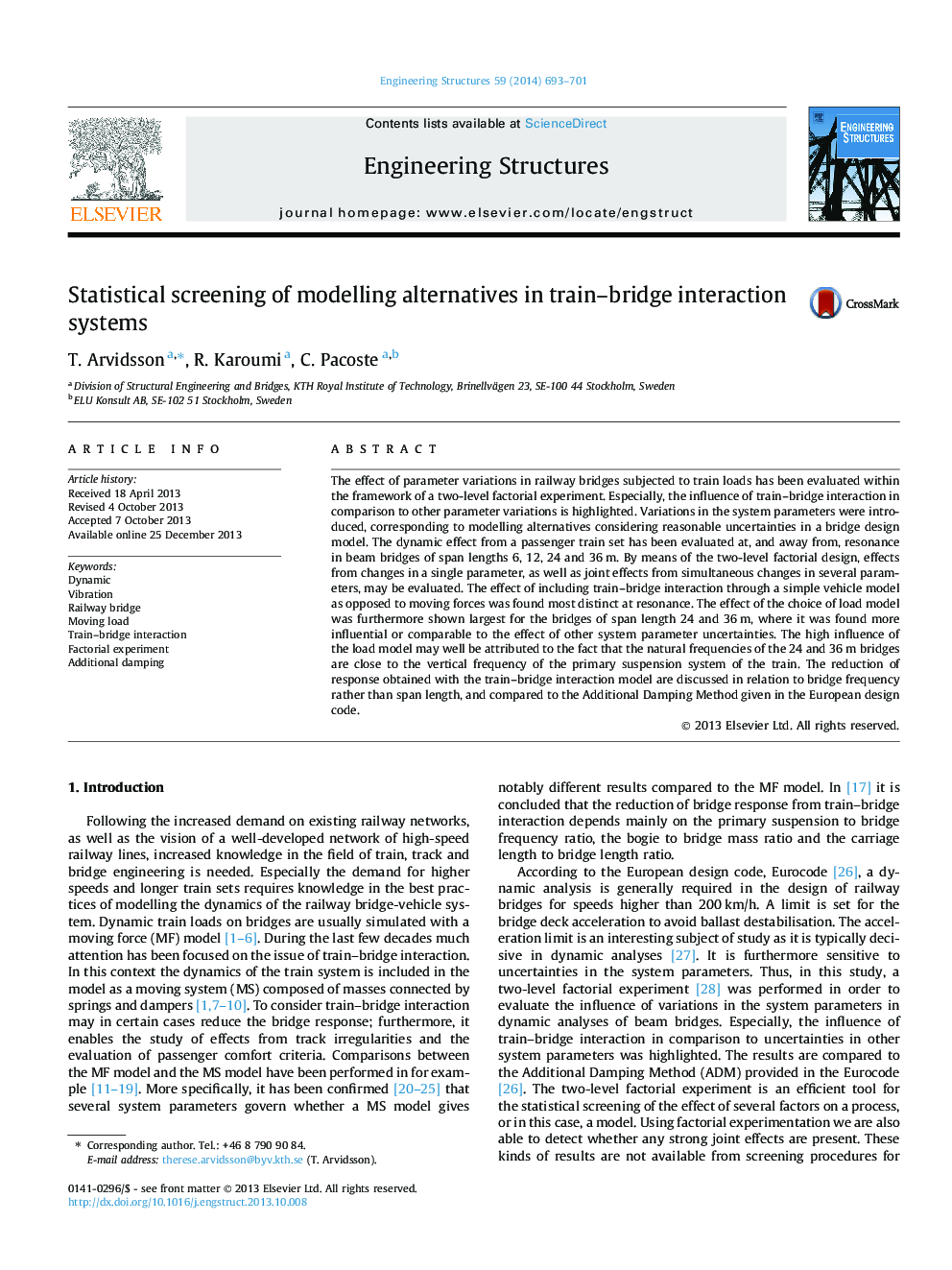| Article ID | Journal | Published Year | Pages | File Type |
|---|---|---|---|---|
| 6740977 | Engineering Structures | 2014 | 9 Pages |
Abstract
The effect of parameter variations in railway bridges subjected to train loads has been evaluated within the framework of a two-level factorial experiment. Especially, the influence of train-bridge interaction in comparison to other parameter variations is highlighted. Variations in the system parameters were introduced, corresponding to modelling alternatives considering reasonable uncertainties in a bridge design model. The dynamic effect from a passenger train set has been evaluated at, and away from, resonance in beam bridges of span lengths 6, 12, 24 and 36Â m. By means of the two-level factorial design, effects from changes in a single parameter, as well as joint effects from simultaneous changes in several parameters, may be evaluated. The effect of including train-bridge interaction through a simple vehicle model as opposed to moving forces was found most distinct at resonance. The effect of the choice of load model was furthermore shown largest for the bridges of span length 24 and 36Â m, where it was found more influential or comparable to the effect of other system parameter uncertainties. The high influence of the load model may well be attributed to the fact that the natural frequencies of the 24 and 36Â m bridges are close to the vertical frequency of the primary suspension system of the train. The reduction of response obtained with the train-bridge interaction model are discussed in relation to bridge frequency rather than span length, and compared to the Additional Damping Method given in the European design code.
Related Topics
Physical Sciences and Engineering
Earth and Planetary Sciences
Geotechnical Engineering and Engineering Geology
Authors
T. Arvidsson, R. Karoumi, C. Pacoste,
